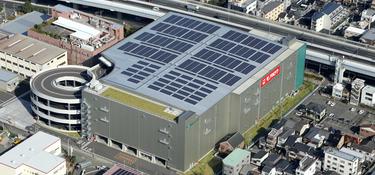
What is infill development?
Infill development is the use of land in established neighborhoods for new development or redevelopment, often as part of a municipality’s redevelopment or economic growth strategy.
In urban areas, waves of industrial and residential development, redevelopment and evolution may leave some land, lots or buildings either unused or underused. Some are closed factories. Others are government buildings that are no longer used or needed. Still others are retail concepts that aren’t viable in the era of e-commerce. Because they are in densely concentrated areas with easy access to consumers and laborers, these sites may be well-suited to other purposes. Infill development puts such spaces into productive use through redevelopment, rehabilitation or new construction.
Why is infill development a good idea?
In virtually every city and town, there is unused or vacant space in neighborhoods where other space is fully productive. Development is best positioned for success when it has easy, efficient access to infrastructure like roadways, railways, sewage and utilities. Because infill sites are almost always connected or adjacent to essential infrastructure networks, infill development projects can easily access these vital services. In addition, by definition, infill sites are proximate to large centers of population, which provide ready access to both workers and customers.
What economic and social benefits does infill development bring?
Infill development brings a host of positive economic and social benefits. Infill development creates employment through its clean-up and construction phases. Thereafter, infill properties serve as a platform for companies to create local jobs and contribute to the local tax base. Job creation, in turn, encourages further investment from vendors, suppliers and more. By making metropolitan areas more dense, infill development relieves some of the pressure to extend roads, utilities and other infrastructure. Infill development can also help reduce commuting distances and times for local workers.
How does infill development contribute to sustainability?
When compared with greenfield development, infill development is a more sustainable practice, contributing to sustainability in a variety of ways. Often, infill development entails cleanup of sites with a legacy of environmental contamination. This work improves the environmental health of not only the site, but also the surrounding community. In many cases, infill development leads to investment to improve infrastructure such as roads, utilities, wastewater treatment and more—benefiting not only the new site but also the surrounding community. Infill developments create jobs proximate to where people live, enabling commuters to get to work using public transportation, walking or biking.
Does Prologis offer infill development opportunities?
At Prologis, our value-added investment strategies create opportunity for investors by realizing untapped value in existing properties through tactics that include, renovation, redevelopment and repositioning.


